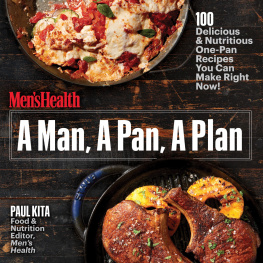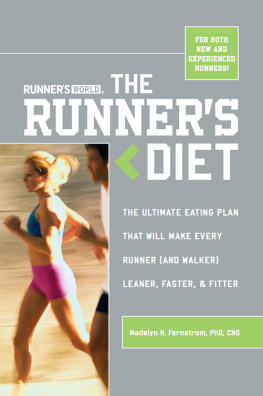Meghan Kita - How to make yourself poop : and 999 other tips all runners should know
Here you can read online Meghan Kita - How to make yourself poop : and 999 other tips all runners should know full text of the book (entire story) in english for free. Download pdf and epub, get meaning, cover and reviews about this ebook. year: 2018, genre: Home and family. Description of the work, (preface) as well as reviews are available. Best literature library LitArk.com created for fans of good reading and offers a wide selection of genres:
Romance novel
Science fiction
Adventure
Detective
Science
History
Home and family
Prose
Art
Politics
Computer
Non-fiction
Religion
Business
Children
Humor
Choose a favorite category and find really read worthwhile books. Enjoy immersion in the world of imagination, feel the emotions of the characters or learn something new for yourself, make an fascinating discovery.
- Book:How to make yourself poop : and 999 other tips all runners should know
- Author:
- Genre:
- Year:2018
- Rating:3 / 5
- Favourites:Add to favourites
- Your mark:
- 60
- 1
- 2
- 3
- 4
- 5
How to make yourself poop : and 999 other tips all runners should know: summary, description and annotation
We offer to read an annotation, description, summary or preface (depends on what the author of the book "How to make yourself poop : and 999 other tips all runners should know" wrote himself). If you haven't found the necessary information about the book — write in the comments, we will try to find it.
Meghan Kita: author's other books
Who wrote How to make yourself poop : and 999 other tips all runners should know? Find out the surname, the name of the author of the book and a list of all author's works by series.
How to make yourself poop : and 999 other tips all runners should know — read online for free the complete book (whole text) full work
Below is the text of the book, divided by pages. System saving the place of the last page read, allows you to conveniently read the book "How to make yourself poop : and 999 other tips all runners should know" online for free, without having to search again every time where you left off. Put a bookmark, and you can go to the page where you finished reading at any time.
Font size:
Interval:
Bookmark:
ABOUT THE AUTHOR
MEGHAN KITA is a writer, editor, and runner who lives in Pennsylvanias Lehigh Valley with her husband and cat. She spent six years at Runners World editing and writing stories about training and racing for print and online. Shes only kept count of the number of marathons shes run (17, in 10 different states), and she used to hold the Guinness World Record for fastest marathon dressed as a fast-food item (female).
ACKNOWLEDGMENTS
ID LIKE to thank my editors on this project, Mark Weinstein and Trisha de Guzman, for believing in a book with the word poop in the title and for their careful, thoughtful edits.
Id also like to thank the many wonderful editors, writers, and experts I had the pleasure of working with during my 6 years at Runners World . Special thanks to my longtime top editor, mentor, and running buddy Tish Hamilton, who helped me become a better journalist, thinker, and person, and to my online editor Chris Kraft, under whose leadership I was able to enjoy the thrill of breaking a story (Paul Ryans misremembered marathon time) for the first time. I couldnt have written this book without the knowledge I amassed from assigning and editing training and racing stories at RW. And I wouldnt have enjoyed my time there nearly as much as I did without my #RunSquad, my lunch-run buddies, and everyone else livin the dream in Emmaus and beyond.
Mom, thank you for always supporting me in my reading, writing, and running. This book is packaged for individual sale.
Paul, thank you for your patience as Ive gotten progressively more (and blessedly less) obsessed with training for long-distance races. That period of obsession helped me write this book. It takes a special kind of partner to be shout-it-from-the-rooftops proud (instead of vaguely embarrassed) when his wife runs a marathon while dressed as a hot dog or writes a book called How to Make Yourself Poop . Its a good thing youre as much of a weirdo as I am.
ONE
PLANNING YOUR TRAINING
5 RUNNING FREQUENCIES (AND HOW TO TELL WHICH IS RIGHT FOR YOU)
Choosing how many days per week to run is like finding a life partner: You just know when its right. But unlike your partner (hopefully), your perfect frequency might change as you age and evolve as an athlete. Heres how to know how many run days are right for you, right now.
ONE OR TWO RUNNING DAYS PER WEEK. If youre coming back from illness or injuryor your life has gone completely bonkerssomething always beats nothing. If you can add in walks or cross-training to boost fitness without much impact, that will prepare your body to run more when the time is right.
THREE RUNNING DAYS. This is an ideal frequency for triathletes, low-mileage runners, or the injury-prone. Youll want each run to last at least 20 minutes. If you have dreams of fast finishes but always end up hurt, you may be able to reach your goals with 1 speedwork day, 1 tempo-run day, and 1 long-run day, plus 2 days of cross-training; pick up the book Run Less, Run Faster for plans.
FOUR OR FIVE RUNNING DAYS. Most longtime runners settle in here, the sweet spot for those who log miles as their primary exercise and arent frequently injured. These runners can safely manage 30 to 50 weekly miles with ample time to recover. Most half- and full-marathon plans will have you running 4 or 5 days.
SIX RUNNING DAYS. More advanced runners might land here, especially when training for a half- or full-marathon PR. The more often you run, the better youll beif your body and schedule will allow it.
SEVEN RUNNING DAYS. This is the realm of streakers, elite runners, and obsessives. If youre young and healthy, you might be able to handle this frequency. Just make sure to run at a truly easy pace the days before and after hard or long workouts.
4 REASONS TO RUN WITHOUT RACING
If anyone tells you youre not a real runner because you dont race, sock em right in the nose. Running makes you a runnerand its easier to stick to a running routine if you know why youre doing it. If youre not running to race, find what else motivates you to determine how you should train.
TO BE HEALTHY AND FIT. Youll want to run about every other day and no more than about 35 miles per week to get the most benefits from running with the least risk of injury. Round out your week with an additional day or two of cross-training or strength training that challenges your body in a different way. Choose a few activities that you enjoy and switch it up if you get bored.
TO LOSE WEIGHT. In addition to a couple easy runs, schedule one long run (of 45 to 90 minutes) and one high-intensity interval session each week. Try Chicago-based coach Jenny Hadfields fat-blaster workout: Walk and jog 6 minutes to warm up, then do eight to ten 60-second all-out bursts with 90-second walking recoveries. Light to moderate strength training promotes a leaner physique, so find a way to work it into your routine at least twice per week.
TO RELIEVE STRESS. High-intensity efforts can create stress, so stick to an easy pace most days. If you know you feel better postrun, try easy doubles (two 20- to 30-minute runs, one in the morning and one in the afternoon or evening) instead of a single longer outing. Research shows your mood improves when youre outdoors, so when possible, avoid the treadmill.
TO BE SOCIAL. Joining up with a group for a long, easy run is a sure way to make running buddies. If that seems too intimidating, offer to join a wannabe runner on his or her first outingsits fun to be a role model. Or enjoy some pre- and postrun interaction without the pressure to chat as you run by joining a group track or hill workout.
2 REASONS TO TRAIN BY TIME
Research shows that your brain processes time and distance differently. When youre going for time, youre more likely to maintain an even effort; when youre going for distance, youre more likely to pick it up as you near the end. Both methods have a place in your traininghere is times.
TO LEARN HOW TO GAUGE EFFORT. Time-based intervals and tempo runs require you to home in on an effort you can sustain for the duration of the repeata skill you need if you race. Youll tune in to your breathing and body to replicate the feeling you experience hitting what youve learned to be your speedwork or tempo pace in distance-based workouts.
TO GIVE YOUR BRAIN A BREAK. If its really warm or windy, or youre coming back from illness or injury, youll struggle to hit your perfect-day paces during workoutsand that might sap your confidence. Instead, translate your usual workout to a time- and effort-based one. For example, if you usually run 800-meter repeats in 4:00 each with 400-meter recovery, do 4:00 hard repeats with 2:00 jogging recovery off the track. Or if your long-run pace is 10:00 per mile and you have 12 on the schedule on a warm, humid day, run at a comfortable pace for 2 hours. Easy-run days are also good to do by time instead of distance: Run slowly enough to avoid huffing and puffing for 30 to 60 minutes.
AND 2 TO TRAIN BY DISTANCE
TO SET A GOAL PACE. If you never know how fast youre running, you wont know how fast you can expect to finish on race day. Some runners are cool with this, but if youre not, youll need to go for distance in at least some of your workouts. Measure key workouts at least every 2 to 3 weeks to see how youre progressing.
TO LEARN A GOAL PACE. If you have a pace in mind, the best way to ensure you can do it on race day is to practice it. You can use speedwork repeats of up to a mile to rehearse 5K or 10K pace. Half and full marathoners can dedicate a midlength weekday run to practicing pace; more experienced athletes can build race-pace miles into their long runs every other week instead.
Font size:
Interval:
Bookmark:
Similar books «How to make yourself poop : and 999 other tips all runners should know»
Look at similar books to How to make yourself poop : and 999 other tips all runners should know. We have selected literature similar in name and meaning in the hope of providing readers with more options to find new, interesting, not yet read works.
Discussion, reviews of the book How to make yourself poop : and 999 other tips all runners should know and just readers' own opinions. Leave your comments, write what you think about the work, its meaning or the main characters. Specify what exactly you liked and what you didn't like, and why you think so.











